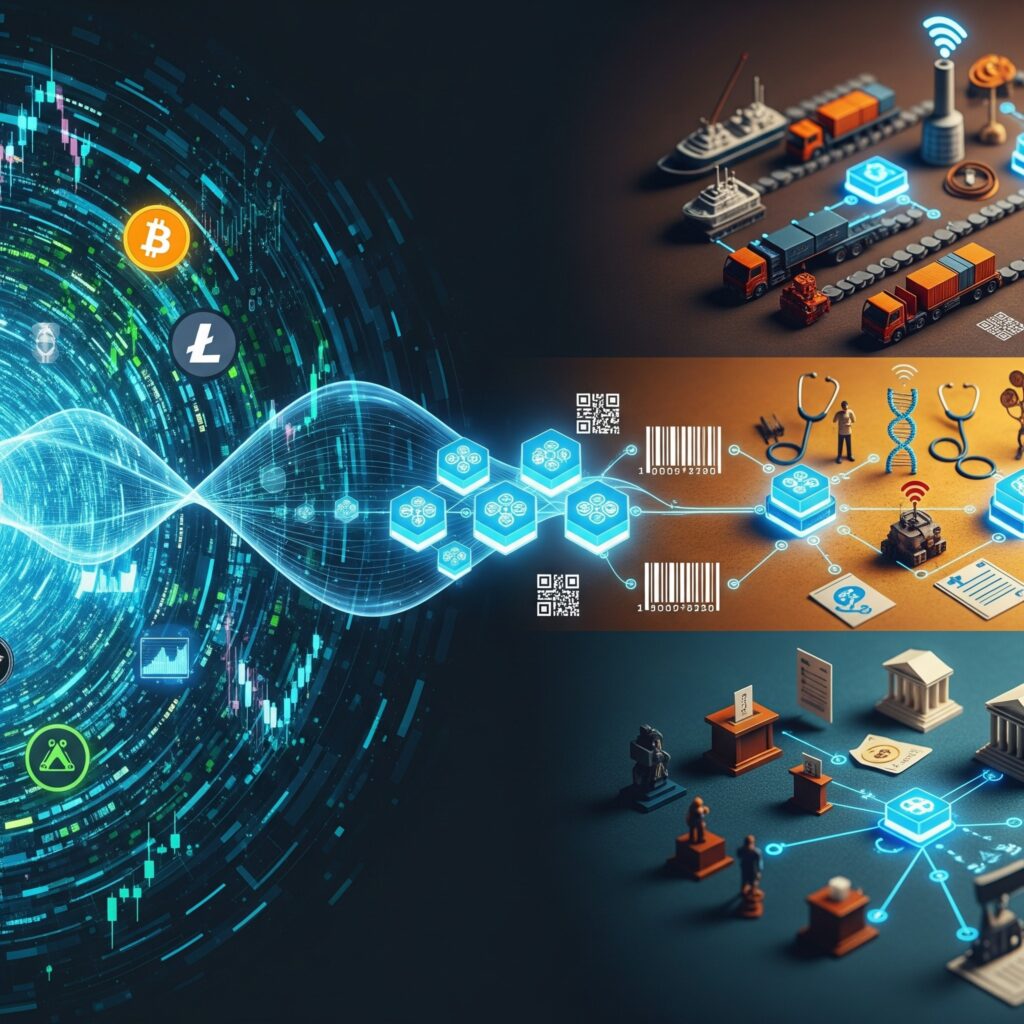How Blockchain Tech is Quietly Reshaping Real-World Systems

The crypto gold rush may have slowed, but blockchain didn’t vanish, it matured. What was once tethered to tokens and price charts is now powering some of the most practical, real-world innovations across sectors. As the hype cools, a more profound narrative is emerging: blockchain is not dead, it’s finally useful.
The spotlight is shifting from speculation to substance, from volatile coins to infrastructure-grade technology. Blockchain is embedding itself where it matters most, out of sight but deeply in service.
From Speculation to Application: The Maturing of Blockchain Tech
While many still associate blockchain with crypto trading platforms and meme coins, the underlying technology has moved on. It’s grown up, and in doing so, it’s left behind the short attention span of financial speculation. Enterprise-grade blockchain solutions are now focused on solving stubborn, systemic problems, issues like transparency, traceability, and security in data transactions.
This shift is not about abandoning blockchain’s decentralized roots; it’s about realizing their broader utility. Immutable ledgers and decentralized verification are proving indispensable, not for trading altcoins, but for building trust in broken systems.
Supply Chain: Trust, Tracked and Verified
Supply chains have always been under siege. From food recalls to counterfeit goods to misleading sustainability claims, businesses are grappling with a credibility crisis. This is where blockchain finds its stride, not by replacing supply chains, but by validating them.
Take IBM’s Food Trust initiative. By recording every step of a product’s journey on a tamper-proof ledger, from farm to factory to shelf, IBM is making supply chains transparent and accountable. For consumers, this means knowing whether their coffee is truly fair trade. For businesses, it means fewer recalls and faster compliance.
This isn’t theoretical. It’s operational. And it shows how blockchain turns visibility into competitive advantage.
Healthcare: Data That Moves With the Patient, Not Against Them
The healthcare system is fractured, with patient records scattered across platforms and providers. This fragmentation isn’t just inefficient, it’s dangerous. Blockchain offers a framework for creating a unified, secure, and portable medical record that follows the patient, not the institution.
Imagine a world where your lab results, imaging data, and medication history are encrypted on a shared blockchain ledger. Only those with your permission can access it. No more faxing records. No more gaps in care. No more wondering who actually owns your data.
Here’s the truth: healthcare doesn’t need more tech. It needs better coordination of the tech it already has. Blockchain is the connective tissue that can unify this chaos, if implemented with clarity and care.
Digital Identity: Who Owns You Online?
As the digital age progresses it has been riddled with identity theft, deepfakes, and unauthorized data mining, identity is both currency and vulnerability. The current model, where platforms own your login and marketers own your data, is broken.
Blockchain offers a compelling alternative: self-sovereign identity. With blockchain-backed credentials, individuals can prove who they are without surrendering control. Everledger, for example, uses blockchain to verify the authenticity and provenance of high-value assets like diamonds and fine art. That same principle, verifying truth without relying on centralized gatekeepers, can apply to people, too.
It’s not just about privacy. It’s about autonomy. And blockchain might be our best shot at regaining it.
Why Crypto Distracted Us From What Matters
Let’s say the quiet part out loud: the crypto frenzy was, in many ways, a massive distraction. While coins soared and crashed, blockchain’s real value, the ability to build systems of shared trust, was buried under speculation and scams.
Too many projects chased price over purpose. Many of the so-called “innovations” were repackaged pyramid schemes, and the market correction was overdue. But in the background, real builders kept building. They weren’t launching coins; they were solving problems.
Now, as the dust settles, blockchain’s potential is being recognized not by influencers, but by institutions. It’s not the loudest voice in the room, it’s the quiet infrastructure being installed behind the scenes.

Unlocking Its Transformative Potential Across Industries
While much of the public’s attention has focused on cryptocurrency’s volatility and speculative rise and fall, the true value of blockchain lies in what it could become when applied to real-world challenges. Think less about token swaps and more about system rewrites, how businesses, governments, and institutions might evolve when trust is no longer an obstacle but a built-in feature. Blockchain’s power is not in the hype. It’s in the protocol. And its potential stretches far beyond finance.
Healthcare
Imagine a healthcare system where medical records aren’t locked behind provider walls or riddled with duplication. Blockchain could enable a universal, secure health record that patients control and authorize. Whether visiting a specialist, moving across states, or managing chronic care, patients could share their full medical history in a tamper-proof, instantly accessible format. Beyond records, blockchain could also support pharmaceutical traceability, ensuring that drugs are genuine, sourced ethically, and safe from counterfeiting. In public health, it could validate vaccination records, monitor outbreaks, or coordinate across hospitals in real-time without compromising data privacy.
Supply Chain
Supply chains today suffer from opaqueness, fraud, and inefficiency. Blockchain could rewrite that narrative by acting as a transparent, immutable ledger tracking every product at every stage, from raw material to shelf. Whether it’s a diamond, a coffee bean, or a smartphone, stakeholders could verify the origin, quality, and ethical sourcing with a few clicks.
For global logistics, this isn’t just a convenience, it’s a game changer. It minimizes disputes, cuts out middlemen, reduces waste, and builds consumer trust in an age of growing ethical scrutiny.
Public Sector and Governance
Blockchain isn’t just for business, it has the potential to revolutionize public service delivery. Smart contracts could automate benefit disbursement, tax refunds, and licensing processes, reducing paperwork, fraud, and administrative bloat. For elections, blockchain could mean secure, transparent, tamper-resistant voting, offering real-time audit trails without compromising anonymity. It could also help governments manage land registries, intellectual property rights, or digital IDs in a more efficient, citizen-centric way.
Privacy and Security
In a digital world where personal data is constantly collected, sold, and leaked, blockchain promises a new paradigm, one where individuals own and manage their identities. Through decentralized ID systems, people could verify who they are without relying on centralized institutions, protecting privacy while streamlining access to services like banking, travel, education, and beyond.
This isn’t about anonymity, it’s about control. And as Web3 continues to evolve, self-sovereign identity could become a cornerstone of digital citizenship.
Energy and Sustainability
Blockchain can also support new models in energy distribution and environmental sustainability. Peer-to-peer energy trading, where households can sell excess solar power to neighbors, becomes viable through blockchain’s transparent ledger. Carbon credit markets could be monitored more reliably. Green supply chain claims could be validated—not just marketed. By offering traceability and automation, blockchain could help sustainability efforts move from aspiration to accountability.
What Comes Next: Blockchain as Infrastructure
The future of blockchain won’t be branded in tickers or headlines. It’ll be tucked into the systems we use every day: logistics software, health networks, digital ID platforms. You might not see it, but it’ll be working for you, verifying, securing, streamlining.
At its core, blockchain reduces friction. It replaces trust assumptions with proof. It offers verifiability without centralization. That’s what makes it so adaptable, whether it’s coordinating supply chains, verifying diplomas, or authenticating digital art. For businesses, this means fewer intermediaries, clearer transactions, and smarter contracts. For individuals, it means data control, process transparency, and broader access. For society, it means building systems that are harder to manipulate and easier to trust.
Blockchain is not always the right tool. But when applied strategically, its transformative potential is massive, and still largely untapped. The question is no longer if blockchain will reshape industries. It’s how well we’ll design the systems that let it.
This isn’t a death knell for blockchain. It’s a graduation. A shift from stagecraft to substance. From hype cycles to utility curves.
If we stop measuring blockchain by coin valuations and start measuring it by operational improvements, the real transformation comes into focus. Quiet, steady, and deeply foundational.
Blockchain’s revolution is here, it just doesn’t look the way people expected.